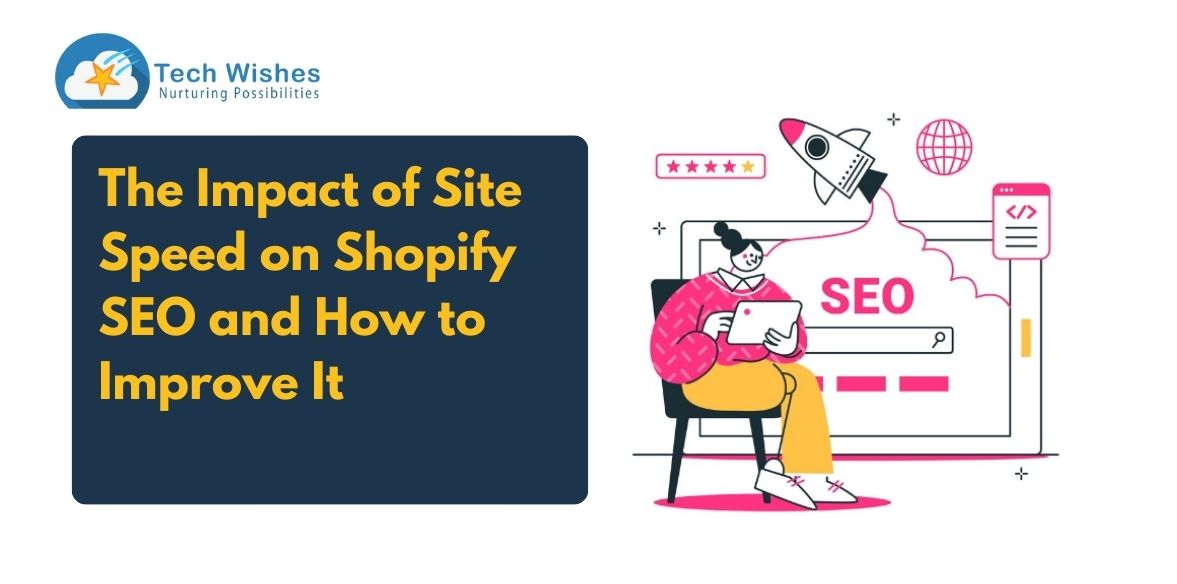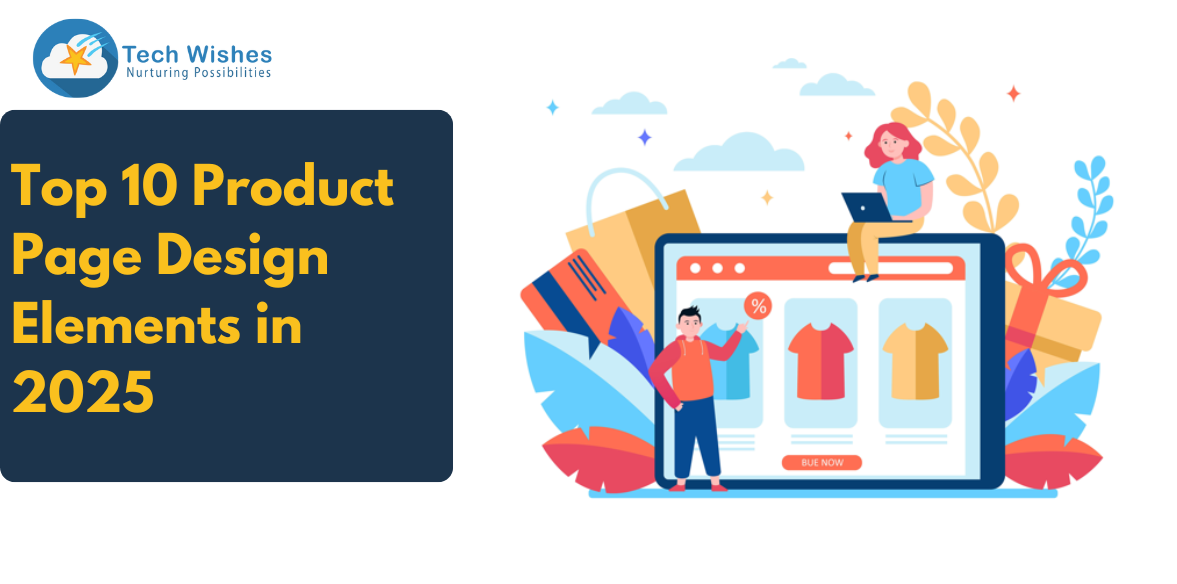In the fast-paced world of e-commerce, site speed is more critical than ever. A slow website can turn potential customers away and negatively impact your search engine rankings. At Tech Wishes, we specialise in Shopify website development, web design, and SEO services for Shopify stores.
The Importance of Site Speed for SEO
- User Experience and Conversion Rates: A fast-loading website is essential for providing a positive user experience. Studies show that even a one-second delay in page load time can lead to a significant drop in conversions. When users experience slow loading times, they are more likely to leave your site, leading to higher bounce rates and lower engagement.
- Search Engine Rankings: Google and other search engines prioritise delivering the best possible user experience. As a result, site speed is a critical ranking factor. SEO experts in India think that a slow website can hurt your SEO efforts, causing your store to rank lower in search results. This means fewer organic visitors and potential customers.
- Mobile Optimization: With the increasing use of mobile devices for online shopping, mobile site speed is crucial. Google’s mobile-first indexing means that the mobile version of your site is considered the primary version for ranking purposes. A slow mobile site can therefore have a significant negative impact on your overall SEO performance.
Factors Affecting Site Speed
Several factors can affect the speed of your Shopify store. Understanding these factors is the first step towards improving your site’s performance.
Theme and Design
- Complexity: Highly complex themes with numerous features and functionalities can slow down your site.
- Heavy Images: Website designers in India suggest that large, high-resolution images can significantly impact loading times.
- Unoptimized Code: Poorly written code, excessive scripts, and unused CSS/JavaScript can contribute to slow speeds.
Apps and Plugins
- Excessive Use: Too many apps can bog down your site, as each app can add additional code that needs to be loaded.
- Inefficient Apps: Some apps may not be optimised for speed and can slow down your site’s performance.
Server Response Time
- Hosting: The quality of your hosting service can affect your site’s speed. Shopify provides robust hosting, but server location and resources can still impact performance.
- CDN Usage: Content Delivery Networks (CDNs) can help by distributing your content across multiple servers globally, reducing load times.
Strategies to Improve Site Speed
Improving site speed involves a combination of optimising your Shopify store’s design, our web design company in Kolkata can help you with managing apps effectively and leveraging the right tools and technologies.
Here are some actionable strategies:
Optimise Images
- Compression: Use image compression tools to reduce the file size without compromising quality. Tools like TinyPNG or Shopify’s built-in image optimization can help.
- Appropriate Formats: Use the right image formats for different types of images (e.g., JPEG for photos, PNG for graphics with transparency).
- Lazy Loading: Implement lazy loading so that images load only when they appear in the user’s viewport, reducing initial load times.
Streamline Your Theme
- Minimalist Design: Choose a theme that is clean and minimalist, focusing on essential features and functionalities.
- Custom Code: If possible, have a developer optimise your theme’s code, removing unnecessary scripts and styles.
- Theme Updates: Keep your theme updated to benefit from performance improvements and bug fixes.
Manage Apps Wisely
- Audit Apps: our web app developers regularly review the apps installed on your store. Remove any that are not essential or contributing to your store’s performance.
- Optimised Apps: Choose apps that are known for their efficiency and minimal impact on site speed. Read reviews and performance reports before installation.
- Embedded Code: Be cautious of apps that require you to embed code snippets, as they can add to your site’s load time.
Leverage Browser Caching
- Static Resources: Use browser caching for static resources such as images, CSS, and JavaScript files. This allows returning visitors to load your site faster as their browser will not need to re-download these resources.
Use a Content Delivery Network (CDN)
- Global Reach: Implement a CDN to distribute your content across multiple servers worldwide, ensuring faster load times for users regardless of their location.
- Shopify Integration: Shopify integrates with various CDNs, making it easier to set up and manage.
Minimise Redirects
- Direct Links: Avoid unnecessary redirects as they add additional HTTP requests, slowing down your site.
- Updated Links: Ensure all internal links point directly to the final destination without passing through intermediate redirects.
Monitor and Test Regularly
- Performance Tools: Use tools like Google PageSpeed Insights, GTmetrix, or Shopify’s performance analytics to regularly monitor your site’s speed.
- Continuous Improvement: Regularly test your site’s performance and implement improvements as needed. Site speed optimization is an ongoing process.
Our responsive website development company is dedicated to helping you create a fast, user-friendly, and successful e-commerce site.
Contact us today to learn more about our web development, web design, and SEO services, and let us help you optimise your Shopify store for success.




